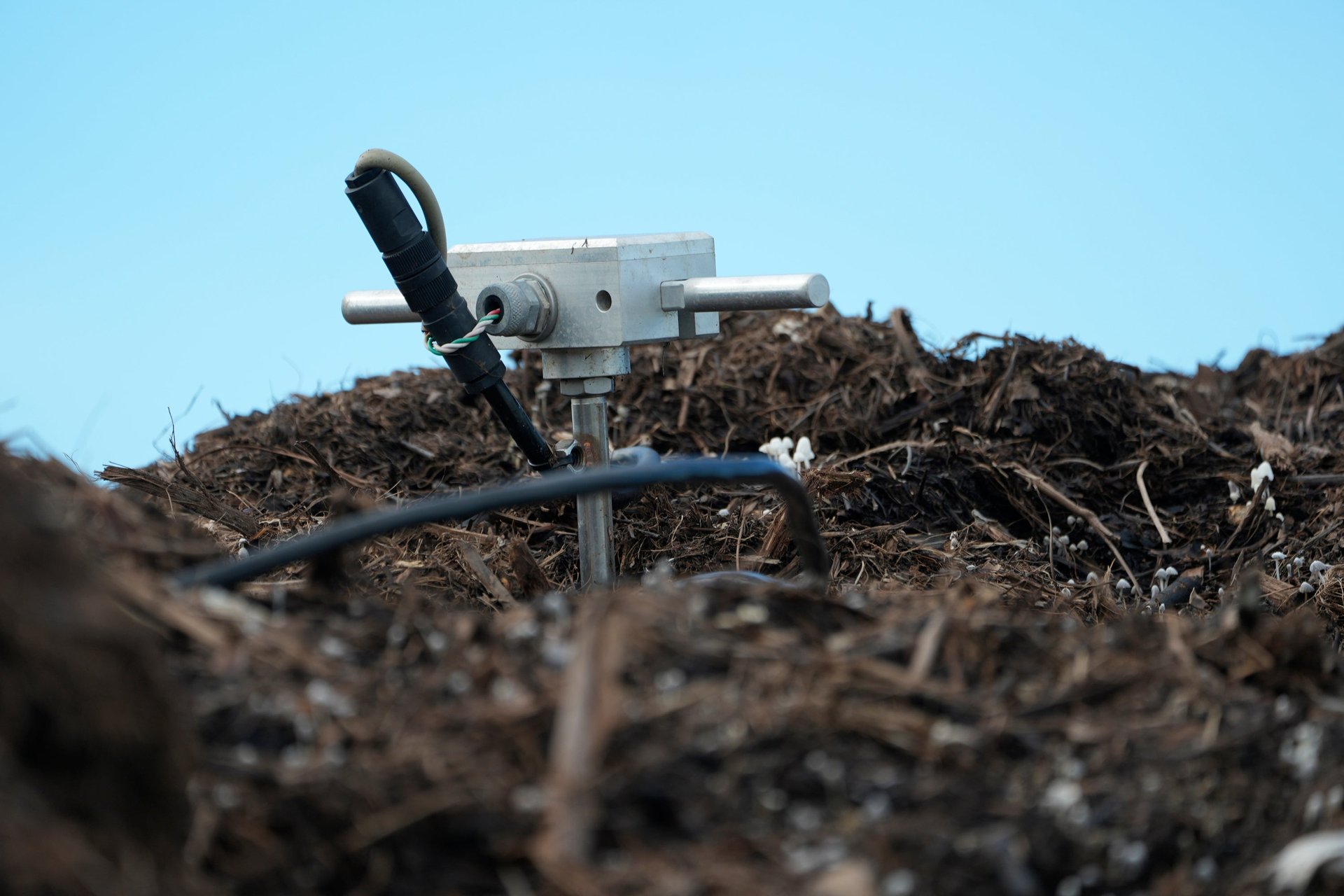California is forging ahead with food waste recycling. But is it too much, too fast?
Two years after California launched an effort to keep organic waste out of landfills, the state is behind on getting food recycling programs up and running

CHULA VISTA, Calif. (AP) — Two years after California launched an effort to keep organic waste out of landfills, the state is so far behind on getting food recycling programs up and running that it's widely accepted next year's ambitious waste-reduction targets won't be met.
Suggested Reading
Over time, food scraps and other organic materials like yard waste emit methane, a gas more potent and damaging in the short-term than carbon emissions from fossil fuels. California's goal is to keep that waste from piling up in landfills, instead turning it into compost or biogas.
Everything from banana peels and used coffee grounds to yard waste and soiled paper products like pizza boxes counts as organic waste. Households and businesses are now supposed to sort that material into a different bin.
But it has been hard to change people's behavior in such a short period of time and cities were delayed setting up contracts to haul organic waste due to the pandemic. In Southern California, the nation’s largest facility to convert food waste into biogas has filed for bankruptcy because it’s not getting enough of the organic material.
“We’re way behind on implementation,” said Coby Skye, the recently retired deputy director for environmental services at Los Angeles County Public Works. “In America, for better or worse, we want convenience, and it’s very difficult to spend a lot of time and effort educating people about separation.”
Meanwhile, some communities that ramped up collection now have more compost than they know what to do with, a sign that more challenges are yet to come as the nation's most populous state plows ahead with its recycling plans.
Only a handful of states mandate organics recycling, and none are running a program as large as California’s, which seeks to slash by 75% the amount of organic waste it sends to landfills by 2025 from 2014 levels.
Reaching that goal within a year would be a stretch, experts said.
About three-quarters of communities are currently collecting organic waste from homes, said Rachel Machi Wagoner, CalRecycle’s director. While some places are lagging, her aim isn't to punish them but to help them get started, adding that every bit helps the state move towards its goal of reducing emissions.
“My goal is about figuring out where the challenges are and getting us as quickly as possible to success," she said.
“I don't know when we will reach our 75% goal, but we will reach it," she added.
CalRecycle hasn't tallied data yet on how much organic waste was diverted from landfills in 2023. Jurisdictions reported diverting 11.2 million tons (10.1 million metric tons) of organics at the end of 2022, up from 9.9 million tons (8.9 million metric tons) the prior year, Wagoner said.
Some challenges include getting residents on board with sorting their trash into a third bin and knowing what goes where. Others concern what to do with the nutrient-rich compost once it's been created from collected grass clippings, tree branches and food scraps.
At Otay Landfill near the Mexican border, workers pick through heaps of branches and leaves to pull out plastic bits before the material is placed under tarps. The site processes 200 tons (181 metric tons) of organic waste daily and hopes to double that amount as more cities ramp up collection, said Gabe Gonzales, the landfill's operations manager.
Once the compost is made, California's law requires cities to use much of it. But many say they don't have enough space to lay it all out.
Chula Vista, a San Diego County city of 275,000 people, is supposed to use 14,000 tons (12,700 metric tons) of compost a year but uses a few thousand at best, said Manuel Medrano, the city's environmental services manager. Some is doled out in free compost giveaways for residents, while heaps of the material are stored in a fenced area of a local park.
“To transport it is really expensive, to spread it is really expensive,” Medrano said. “We're nowhere near meeting that requirement."
Communities with more open space might fare better. Cody Cain, head of marketing and sales for compost-maker Agromin, said his company has developed a plan to link cities struggling to meet these requirements with farmers who need the material for their soil.
"We basically are matchmakers. Call us the ‘Tinder' of compost, and we'll bring the farmer together with the city," Cain said.
Food waste also can be converted into biogas to fuel vehicles or industrial operations. But a massive facility built three years ago in the Southern California city of Rialto now finds itself facing bankruptcy after Los Angeles was slow to ramp up collection, leaving the plant with insufficient waste, said Yaniv Scherson, chief operating officer for Anaergia Inc.
“It's because the cities didn't enforce on time the market is struggling,” he said. “If it doesn’t get feedstock this year, there is a chance it shuts down completely.”
LA Sanitation & Environment, which handles trash and recycling for the city of nearly 4 million people, had no immediate comment.
Heidi Sanborn, founding director of the environmental National Stewardship Action Council, said she supports the state's law but wants more done to keep plastics out of compost and to develop alternative energy solutions. Some of California's challenges stem from the fact the state is trying to build a system on a scale the country hasn't seen, she said.
“We're trying to fix incredibly tough problems. We're not going to find the perfect solution out of the gate," she said.
But, Sanborn added, “we're on our way.”